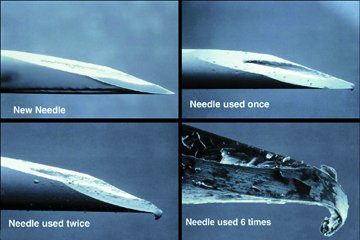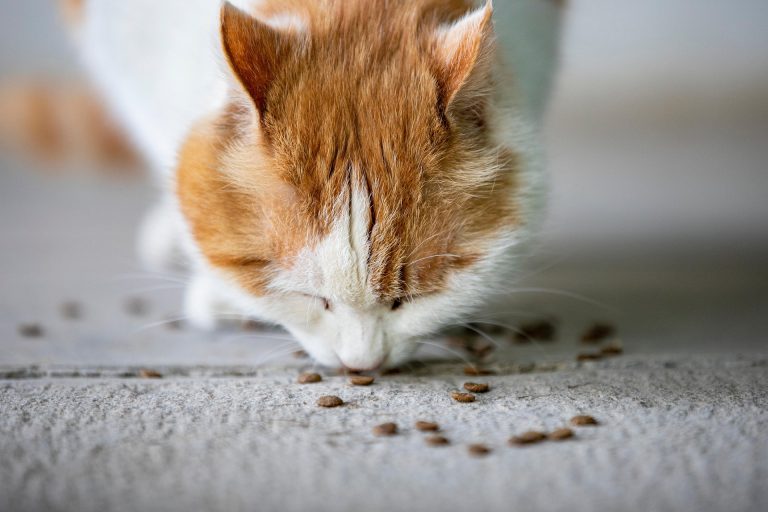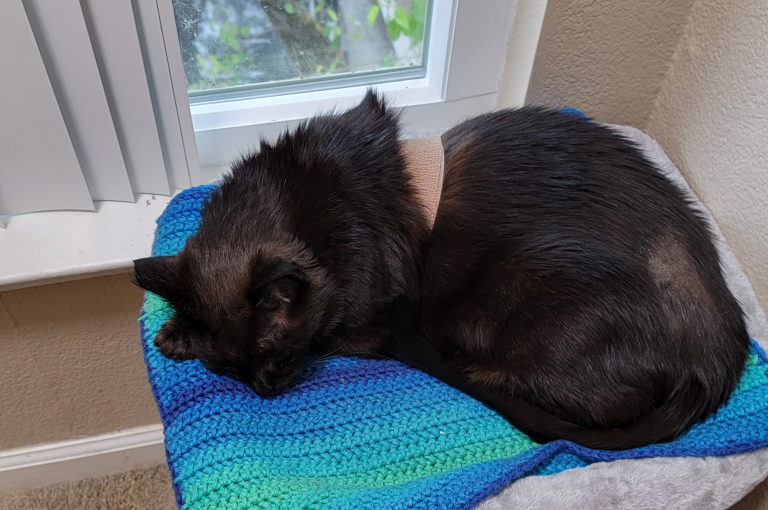Category: Feline Diabetes
Tags: Feline Diabetes, Diabetic Cat Care, Home Testing, Insulin, Injections
Always consult your veterinarian about your pet’s health and treatment plan. This site is owned and administered by volunteers, not medical professionals. We are not designed to take the place of your regular veterinary care.
Giving your cat insulin for the first time can be nerve-wracking. You’re holding a needle, your cat might be squirming, and your hands are probably shaking. But here’s the truth: you can do this — and with just a little practice, it’ll become a normal part of your daily routine.
Start with the Right Tools
Start with the basics. Make sure you’re using the correct type of syringe for your insulin — either U-40 or U-100 — and double-check your dose each time. Most people find that 31- or 30-gauge syringes are the most comfortable for cats, since they’re thinner and gentler on the skin. Always keep your insulin in the fridge, but let it warm slightly in your hand before drawing it up. Never shake the vial — just roll it gently if it needs mixing.
Make It a Calm Routine
When it’s time to give the shot, choose a quiet, familiar spot where your cat feels safe. Many people find that after meals or during a favorite treat session is a good time, since the distraction helps make the experience more positive. You might be surprised how quickly your cat adapts when injections become part of a predictable routine.
Where to Inject: More Than Just the Scruff
The most common place to inject is the scruff — the loose skin between the shoulder blades — but it’s far from the only option. Many cats tolerate other sites better, such as the side of the chest, flank, or even the belly. The goal is to find an area where your cat is comfortable and you can reliably avoid fur shots, which happen when insulin gets injected into the fur instead of under the skin. Everyone has a fur shot once in a while, but finding the right spot can minimize them.

Why Site Rotation Matters
Rotating injection sites is also important. Repeatedly injecting in the same area can lead to lipomas (harmless fatty lumps) or scar tissue, both of which can interfere with insulin absorption. Even if your cat prefers shots in the scruff, you can still vary the exact location — for example, by using the inner, middle, and outer scruff on alternating days, or switching sides between morning and evening. If your cat tolerates injections elsewhere, you might rotate from the scruff to the chest to the flank, using one side of the body in the morning and the other at night. These small changes can make a big difference over time.
How Injection Site Affects Absorption
Keep in mind that where you inject can also affect how quickly the insulin is absorbed. Shots in the scruff tend to absorb more slowly than those in the flank or belly, though the actual blood sugar results may not change much. Still, it’s worth observing whether your cat’s numbers vary based on injection site — every cat is different, and learning your own cat’s patterns will help you make better dosing decisions.
Two Techniques: Tent vs. Roll Method
There are two common methods for giving insulin: the tent method and the roll method. In the tent method, you use your non-dominant hand to gently lift a fold of skin, forming a little “tent.” Then, insert the needle at the base of the tent, angled around 45 degrees, with the bevel facing up so the sharpest edge goes in first. This is the most popular technique and works well for many people. The roll method is a great alternative that some caregivers find helps reduce fur shots. With this technique, you lift the skin and then roll your hand back so the back of your hand faces the cat’s head. This flattens the skin and exposes a clear spot, making it easier to see exactly where you’re injecting. No matter which method you use, always insert the needle smoothly and steadily, and never reuse a syringe — needles dull quickly and can cause discomfort or infection.
Don’t Reuse Syringes
It might be tempting to reuse syringes to save money or reduce waste, but it’s not a good idea. Insulin syringes are designed for single use only. Even after one injection, the needle dulls significantly, which can make the next shot more painful for your cat. Reused syringes are also more likely to carry bacteria, increasing the risk of infection or irritation at the injection site. For the safety and comfort of your cat, always use a fresh syringe for every shot, and dispose of it in a proper sharps container.

Stay Calm — and Keep Going
Most of all, try to stay calm. Your cat will pick up on your energy, and even if things don’t go perfectly, that’s okay. Missed a shot? Gave a fur shot? It happens. Unless you clearly see insulin on the fur, you probably got it in — and if you didn’t, don’t re-dose. Just monitor your cat and move forward. They’re forgiving, and they’ll get used to this too.
Real Tips from Real Cat Parents
Plenty of cat parents have shared tips from their own experiences. Some feed during injections to distract their cats. Others find the roll method life-changing. Many say they were terrified at first, but now give shots one-handed while half-asleep before their morning coffee. It gets easier. And if you ever want a visual, check out the video from Julie & Punkin showing exactly how a home injection is done — it’s a helpful reference, especially if you’re a visual learner.
You’ve Got This
You’re not just giving a shot — you’re giving your cat a better chance at health and stability. Injections might feel intimidating now, but in a matter of days or weeks, they’ll feel routine. And if you ever need help, our forum is open 24/7, filled with real cat parents who have been exactly where you are now.
Additional Resources
How to Give Injections – Detailed
Join the forum and tell us about your cat!









